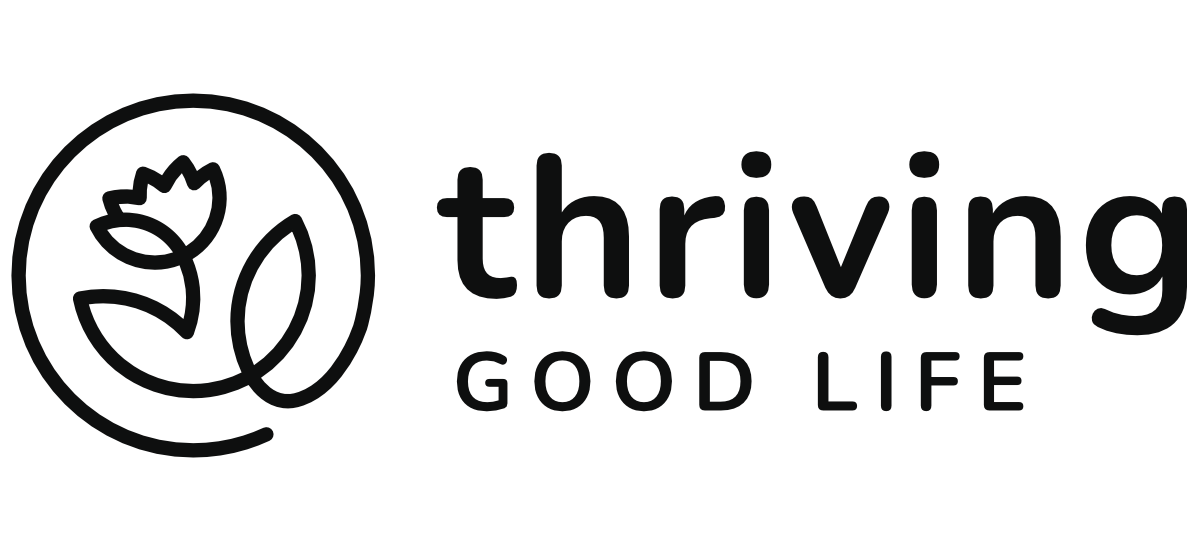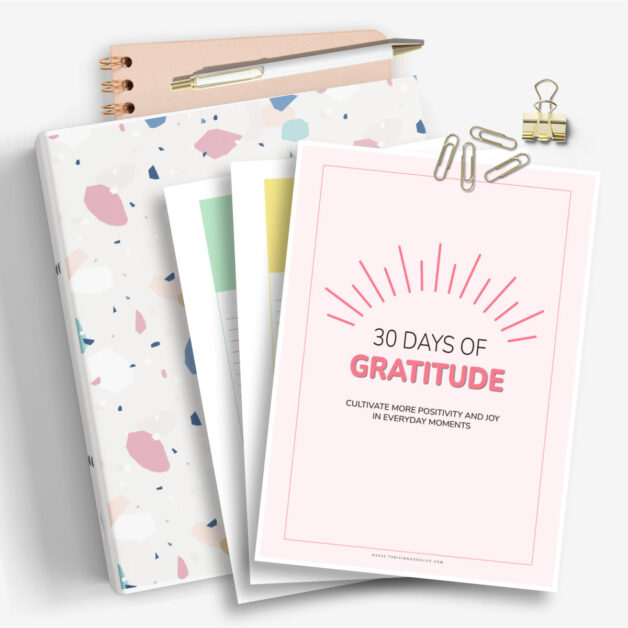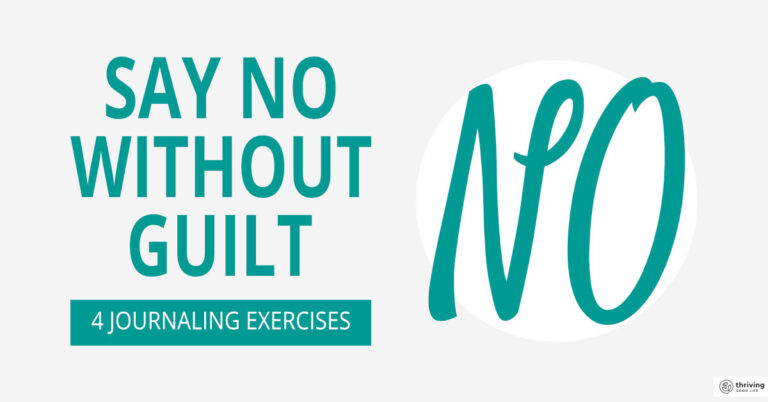There are two complaints I often hear about gratitude journaling:
One is that it doesn’t work.
And two is that it gets repetitive as hell. Real quick.
As someone who’s drunk the gratitude Kool-Aid (with the t-shirt stains to prove it), I can’t begin to tell you how much this pains me.
Being able to reflect on the good, even when things are far from good is some kind of superpower. A superpower that wraps you up in a cloak of hope, optimism, and joy.
Sounds a little gushy, but I’m dead-ass serious.
In this article, I’ll be sharing my early (not so great) experience with gratitude journaling, along with a few actionable tips for how to start a gratitude journal or keep your current one going.
Pick the Kind of Gratitude Journal that Makes You Want to Write
I have a friend who set up a whole index card system dedicated to recording moments of gratefulness and positivity.
She calls this her happy stack.
My preference when it comes to gratitude journaling is to use paper and a trusty pen.
If paper is your preferred tool of choice, here are a few options to consider:
- Option one: Write in an existing notebook or journal. No need to rush out and get anything new, you start with what you’ve already got.
- Option two: Use a dedicated notebook to neatly contain your musings in one place. No aggressive flicking through a ton of journal pages to find the thing you were grateful for last week.
- Option three: Start a guided gratitude journal (like this one) with pre-written prompts to help you record gratefulness on a weekly basis. Great if you find yourself getting stuck on what to journal about.
- Option four: Try a printable gratitude journal. You can stick the pages in your bound journal or insert them into a ring binder. This is a nice, inexpensive way to organise and freshen up your journaling.
Also, take a look at these gratitude journal prompts for more inspiration on what to write.
Whichever journal you choose, make sure it matches your journaling style, and that you’re comfortable writing in it.
You’ll be in your journal a lot.
Make it a source of pleasure.
Carve 5 Minutes Out of Your Day with Snatched Moments of Time
Finding time to journal – what a freaking chore, eh?
We only have 24 hours in a day. That’s like only 1440 minutes each day to eat, sleep, poop, and get things done.
That’s grand total of 10,080 minutes a week. Every week!
I remember the early, in consistent days when I would talk myself out of journaling because I couldn’t afford the time.
Now I can’t afford NOT to journal.
If I don’t journal at least once a week I feel antsy.
If I neglect my journal any longer than a week FOFOTWANCBO (Fear Of Falling Off The Wagon And Never Climbing Back On) sets in, and I’m definitely more irritable.
There’s a false perception around journaling that puts many people off.
And that’s that you have to write for extended periods of time to get any real benefit of this magical tool.
Annnnd that you have to do it daily.
And have the ‘perfect’ environment in which to do it.
Yeah, that’s nice and all… but it’s not true.
Some people can spend 30, 40, or 60 minutes journaling. Every. Single. Day.
Probably in a secluded, dimly-lit private study with only the soft glow of natural light as a distraction.
And that’s fantastic.
But what if your crazy schedule and hectic household don’t grant you such a luxury?
Well, there are always snatched moments.
You know, those moments in between daily tasks where you’re waiting for stuff to happen…
- waiting for your body to fully wake up before getting out of bed in the morning,
- waiting for the coffee to brew and for that glorious caffeine to kick in,
- waiting for the roast to become tender and juicy in the oven,
- waiting for the bus or train to finally arrive (and then during the journey),
- waiting for the kids to finish their homework or get dressed (if they’re old enough to do such things by themselves),
- waiting for sleep to catch hold after you put your weary self to bed at night.
You don’t need as much time, or space as you think you do fit your journal entries in. Start small.
When we set aside time to express gratitude, we get a dopamine and serotonin boost that makes us feel all levels of good 1.
When something makes us feel good, we want more of it. We start to ‘find’ more time and space.
And before we know it, journaling becomes the habit we never knew we needed.
Don’t Make the Same Mistake I Made
My first attempt at gratitude journaling didn’t go down so well.
I sat on the edge of my bed every morning recounting three things I was grateful for;
- the beautiful birdsong I woke up to,
- an inspiring conversation I had with a friend the night before,
- thank goodness I had just about enough eggs left to make an omelette.
As time went on, I started noticing a pattern.
Day after day, I was writing different iterations of the same things I was grateful for…
My family, my friends, nature, blah, blah, blah.
I quickly grew tired and bored by the monotony of my entries.
The daily gratitude practice everyone was saying was the best way to feel grateful, felt forced and repetitive.
I didn’t like it. Not one bit.
So I kinda gave up for a while.
Then I came to the conclusion that if this was going to work for me, I’d need to change a couple of things:
- Stop trying to write in my gratitude journal every day. It wasn’t working (for me)
- Move beyond surface-level gratitude and dig deeper (we’ll discuss this in a minute)
Don’t do what I did when I started gratitude journaling.
Don’t force it.
Don’t sit there struggling to write something good for the sake of writing every day.
Yes, daily journaling works for some. And yes, doing the same thing daily is a great way to form a habit fast.
But, if you’re feeling like you’re going through the motions just to check off the daily task of expressing gratitude, you’ve turned something wonderful into a chore.
You don’t have to journal daily to reap the rewards of your practice.
Try three or four times a week instead.
See how that feels for you, and adjust accordingly.
Do This One Thing to Supercharge Your Gratitude Journaling
I wasn’t being specific with my journal entries.
Instead of writing surface-level entries, I needed to go deeper.
That’s where the magic happens.
That’s where you get the goosebumps and the tingles down the spine because you’re not just robotically writing a list of three things you’re grateful for. You’re re-experiencing the happy thoughts, feelings, and emotions associated with the moments you’re recalling.
So, reflect on those episodes of gratitude and be specific about why you highlighted those moments in particular, and how they made you feel.
Really try to animate the emotion.
Here, you can steal this format I use:
“I’m grateful for [state the thing you’re grateful for] because [state the reason you’re grateful for it] and that makes me feel [state the emotion].”
A filled-out example looks like this:
“I’m grateful for my bed because it offers me a relaxing space on which to rest my weary body at the end of a stressful day, and that makes me feel safe.
The fresh smell of lavender on my sheets adds to that comforting atmosphere, and I love that I wake up feeling refreshed and rejuvenated the next day.
In the morning, the warm duvet, fluffy pillows, and comfortable mattress give me that snug, cosy feeling. Almost as though I’m being gently hugged by a close friend.
Without the support of my bed, I’d be a sleep-deprived mess, stumbling around aimlessly and grumbling at the world.
So, thank you, dear bed. You’re my sanctuary, my peace, and the perfect place to recharge.”
Yep, it’s a bit melodramatic, but you can see how much that bed is being appreciated, right?
And it reads way better than:
“I’m grateful for my bed.” Blah!
Another, perhaps simpler way to do this is to write down five reasons why you’re feeling grateful 2.
Sticking with the bed example:
“I’m grateful for my bed because…
- It’s warm and cosy and keeps me snug on cold winter nights.
- It’s a place where I can start my day feeling calm and collected.
It’s a reminder to look after my body and prioritise self-care.- It facilitates sweet dreams and restful sleep so I wake up feeling well-rested.
- It feels like a safe haven to gather my thoughts and set intentions for the day.
—
I hope those tips help.
More journaling inspiration
FOOTNOTES:
- Chowdhury, M. R. (2019, April 9). The Neuroscience of Gratitude and How It Affects Anxiety & Grief. PositivePsychology.com. https://positivepsychology.com/neuroscience-of-gratitude/
- I got this notion from this video with Marie Forleo, who says she got it from Robert Emmons – a leading expert in the gratitude and positive psychology space. I couldn’t find an original source that confirms this specificity element of journaling, but through my own practice, I know being specific is a game-changer









